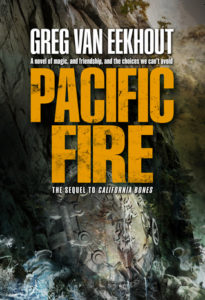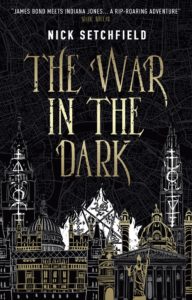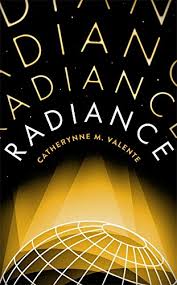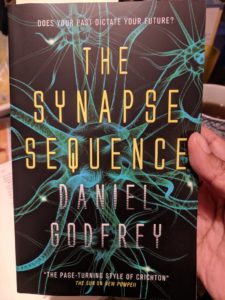 Q: Every book has its own story about how it came to be conceived and written as it did. How did The Synapse Sequence evolve?
Q: Every book has its own story about how it came to be conceived and written as it did. How did The Synapse Sequence evolve?
A: I find a few different ideas have to come together before I’m able to write a novel, otherwise I don’t have the critical mass to get beyond short story stage – or have something that runs out of gas far too early.
I had in my mind that an air crash investigator would make a great detective, and a plot relating to a foster child. Both of these things had to snap together with the idea of having a technology that could be used to explore witness memories. The decision to run a separate (but connected) storyline relating to the main character (Anna) looking back over events came much later, but seemed a good thematic fit.
Q: I enjoyed the push-pull nature of humanity’s interdependence with Artificial Intelligence throughout The Synapse Sequence. Do you consider the novel a cautionary tale regarding human rights vs the safety and convenience provided by modern/future technology? If so, how do you believe we should draw the line between the rights of the individual vs the collective?
A: The increasing use of artificial intelligence is undoubtedly going to generate positives and negatives for society, and politicians will likely be forced to decide where it can and can’t be used (as is alluded to in The Synapse Sequence). However, I don’t believe ‘the line’ is static. For instance, I recently visited a reservoir that had been created by flooding a valley that had once contained several villages. “Imagine them doing that now,” someone in the visitor centre remarked. At the moment, the rights of the individual are probably given higher priority than ever before. How long this will last – in the face of global pressures, including climate change – is up for debate.
Q: Do you write with any particular audience in mind? Are there any particular audiences you hope will connect with this story?
A: I describe my writing as an ‘out of control’ hobby, which I’m pleased has found a home at Titan Books. I don’t like to get bogged down in the technology and instead focus on forward momentum. Hopefully this means it will reach a wide audience.
Q: The Synapse Sequence is, at its heart, an exploration of the link between time and memory. You also explore time travel in your previous books in the New Pompeii series. What drives your fascination with the mutable nature of time?
A: I suppose the fascination is more with non-linear narratives rather than time or time travel. The non-linear approach allows you to approach a story from a few different angles, which can be run at different paces between the crossing points.
Q: What is the first book you read that made you think, “I have got to write something like this someday!”?
A: I’m going to have to be slightly controversial here: what fires up my creative side more than anything else are movies, and growing up when I did, I am very much influenced by what came out in the 1980’s. Empire Strikes Back, Back to the Future, Indiana Jones, Ghostbusters. I really like seeing how the plot strands start to weave together as events build to a climax.
Q: I really enjoyed your writing tip for new writers on your website, which is essentially “Finish your book.” How long did the process of learning this take you, and is there any other advice you’ve learned since that you’d like to impart?
A: I see and hear this a lot actually: that writers have this new idea and they’re so keen to get going on it that they set off and soon come to a halt – they’ve burned through that initial enthusiasm – and then instead of focusing on why it went wrong it’s easier to start on the next shiny new thing.
The turning point for me came when I set myself a challenge that I could not start the next thing until I finished what I was writing, even though I knew it wasn’t good enough. It’s the only way to learn about structuring the all-important mid-section of the book.
The only thing I think I would now add to this is that it’s very useful to know (roughly) what your key beats are: how does your story start, what kicks off the main action, what happens in the middle to up the ante, how do you progress to the end, and how do you finish? You then have something to aim at as things are being written.
Q: Do you adhere to any particular writing regimen?
A: I have a full time job so 90% of my writing is done on a Sunday, and I aim for about 2,000 words on that day. I do editing (which can include re-writes) at other times, but only when on deadline.
Q: Are you a pantser (someone who writes by the seat of their pants) or a plotter? Given the structure and twists of The Synapse Sequence, would I be wrong in betting it’s the latter?
A: The Synapse Sequence was the first book where I’ve agreed an outline with my publisher prior to starting work. It was interesting to learn that process, but mainly I just like to have my key story beats and work between them as I’m going along. New Pompeii (my first published novel) was written very much in my spare time as a hobby (before getting an agent, let alone a publisher), and I’d started Empire of Time (the sequel) prior to it being signed to the publisher: so I just needed to give a brief description of what I’d already written.
I must say though that the outline was useful: it kept me focused and reduced the amount of aborted time going down plotting dead ends. It also made the editing much, much easier.
Q: What can you tell us about your next project?
A: I have a few promising ideas, but am looking for the final piece to make them work.
Q: What are you reading at the moment?
A: I’m sort of between books at the moment. I’m just about to start Sea of Rust by C. Robert Cargill. It’s on the shortlist for the Clarke Award, and I’ve heard a lot of good things about it. The book I’ve just finished was The Midnight Line by Lee Child.
Q: Are there any new books or authors in science fiction that have you excited?
It’s great that there’s such a lot of variety at the moment: books I very much enjoyed last year included Yoon Ha Lee’s Ninefox Gambit, Natasha Pulley’s The Bedlam Stacks and GX Todd’s Defender. From this year’s selection, the top two have both been space operas: Gareth Powell’s Embers of War and Dominic Dulley’s Shattermoon.
Q: Tell us why you love your book!
A: Aside from the amount of time and emotional investment I put into it? ☺ I suppose the risk with near future science fiction is that things can happen as your writing, and it takes a long time to get a book written and published. It’s been quite fun to see a lot of stuff in the book start appearing in the mainstream media; whether that be the use of AI in the police force, better understanding the mechanics behind memory, or the policy responses to automation (the most high profile of which is Universal Basic Income). I think the book has come out at the right time, so hopefully it will resonate with those who pick up a copy.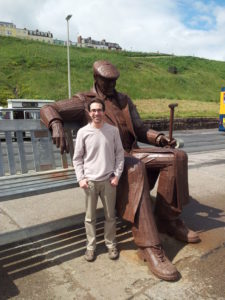
Thank you so much for having this discussion with us!
Thank you for inviting me to be interviewed on your website!
~~~
Author Links
Daniel Godfrey
Twitter
~~~
The Synapse Sequence was published June 19th 2018 and is available via all good book sellers. My review of the book itself may be found here.

